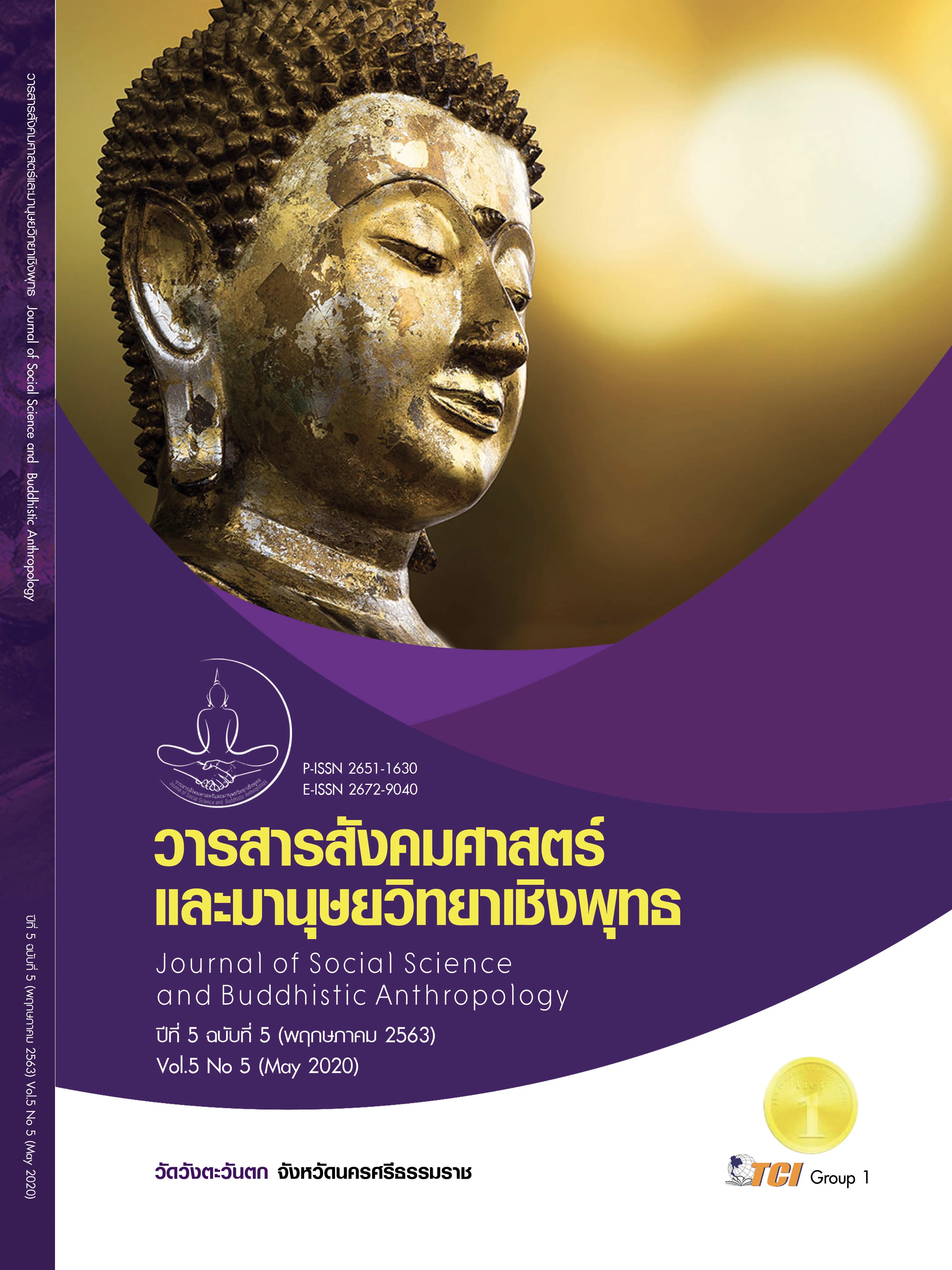THE BUDDHA’S DISSEMINATION OF BUDDHISM IN THE MULTICULTURAL CONTEXT OF INDIA
Keywords:
Dissemination, Buddhism, Multi - Culture of IndiaAbstract
The study “The Buddha’s Dissemination of Buddhism in the Multi-Cultural Context of India” was conducted for two purposes: 1) to investigate India’s multi-cultural context of faiths and religions; and 2) to explore Buddha’s methods of religious dissemination in India’s multi-cultural context of faiths and religions. Documentary research were used in this investigation. The findings are as follows. In Buddha’s time, India had as many as 62 groups of religions, faiths and sects, each having a different set of concepts and practices. Buddha stated that these beliefs subjected people to a whirlpool of wrong view that prevented them from true freedom from sufferings. Among that context of India, Buddha intended to disseminate the doctrine of the truth and liberation from all sufferings, which he had obtained through his enlightenment, in order to help people experience true happiness and religious benefits. Buddha’s another intention was to establish, propagate and consummate Buddhism. To fulfil these two intentions, Buddha adopted the proactive strategy and integrated a holistic of these five dimensions: 1) Organization Management, emphasized structural systematization, sangha governing system, intra - organizational relations, personnel quality, and knowledge management; 2) Religious Doctrines, emphasized both transcendental and morality levels; 3) Dissemination, emphasized classification of dharma concept, art of rhetoric, and application of teaching strategies; 4) Religious Network Expansion, emphasized an approach to leaders who were ready to be enlightened; and 5) Social Relations Management, emphasized balance between Buddhist realm and power of state, peace and mercy, protection of the purity of Buddhism, and organizational stability.
References
พระครูโอกาสธรรมพิทักษ์ (เสียม เตชธมฺโม/เงางาม). (2554). “การศึกษาหลักและวิธีการเผยแผ่ธรรมของพระธรรมโมลี (ทองอยู่ ญาณวิสุทฺโธ)”. ใน วิทยานิพนธ์พุทธศาสตร์มหาบัณฑิต สาขาพระพุทธศาสนา. มหาวิทยาลัยมหาจุฬาลงกรณราชวิทยาลัย.
พระพรหมคุณาภรณ์ (ป. อ. ปยุตฺโต). (2556). พุทธวิธีในการสอน. (พิมพ์ครั้งที่ 18). กรุงเทพมหานคร: บริษัทพิมพ์สวย จำกัด.
พระไพศาล วิสาโล. (2546). การปฏิรูปและฟื้นฟูพุทธศาสนาในยุคโลกาภิวัตน์. เรียกใช้เมื่อ 1 มกราคม 2563 จาก http://www.buddhadasa.org
พระไพศาล วิสาโล. (2560). พุทธศาสนากับภารกิจในยุคโลกาภิวัตน์. เรียกใช้เมื่อ 1 มกราคม 2563 จาก https://www.visalo.org/article/kanlayanadham38.html
พระมหาสมบูรณ์ วุฑฺฒิกโร. (2548). ขบวนการพระพุทธศาสนายุคใหม่: พระพุทธศาสนาเพื่อสังคม (Socially Engaged Buddhism). เรียกใช้เมื่อ 1 มกราคม 2563 จาก https://www.mcu.ac.th/article/detail/519
พระมหาหรรษา ธัมฺมหาโส (นิธิบุณยากร). (2554). พุทธสันติวิธี : การบูรณาการหลักการและเครื่องมือจัดการความขัดแย้ง. กรุงเทพมหานคร: บริษัท 21 เซ็นจูรี่ จำกัด.
มหาจุฬาลงกรณราชวิทยาลัย. (2539). พระไตรปิฎกภาษาไทย ฉบับมหาจุฬาลงกรณราชวิทยาลัย. กรุงเทพมหานคร: โรงพิมพ์มหาจุฬาลงกรณราชวิทยาลัย.
วรศักดิ์ มหัทธโนบล. (2555). พุทธโคดม. กรุงเทพมหานคร : สำนักพิมพ์โอเพ่นบุคส์.
อภิญญา เฟื่องฟูสกุล. (2559). “ปรากฏการณ์ทางศาสนาในโลกาภิวัตน์” ใน จับกระแสสังคมศาสตร์: รวมบทความวิชาการ 50 ปี สังคมวิทยาและมานุษยวิทยา เชียงใหม่. เชียงใหม่: มหาวิทยาลัยเชียงใหม่.
Thich Nhat Hanh. (n.d.). “Love in Action” (Excerpted From “The Soul of Nature: celebratingthe spirit of the Earth” edited by Michael Tobias & Georgianne Cowan, Penguin 1996.). Retrieved January 1 , 2020, from http://www.swa raj. org /shikshantar/Love%20in%20Action.pdf








